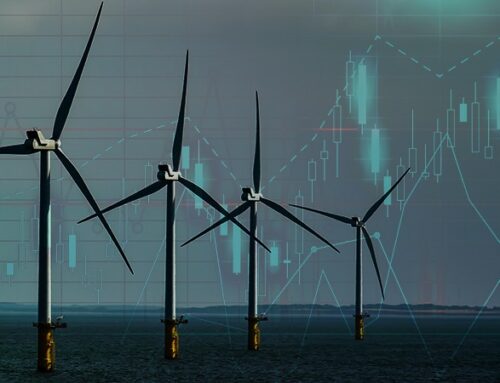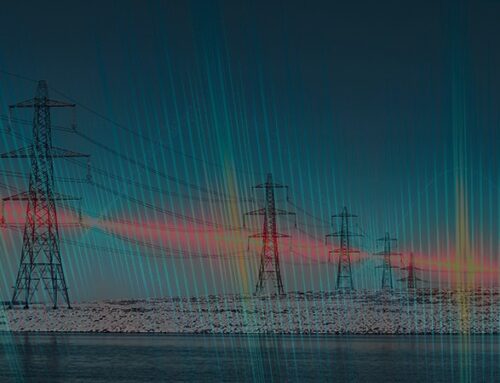In March, Ofgem disappointed many by indicating that it is minded to reject all but one of the seven interconnector projects applying for authorisation under the cap and floor mechanism. The only project which makes the grade being the Tarchon (1.4 GW) between Britain and Germany. Ofgem is consulting on its position, with the consultation closing on 31 May. It is also minded to approve LionLink (1.8 GW), an “Offshore Hybrid Asset” (“OHA”) which would connect GB to both the Dutch power grid, and Dutch wind farms in the North Sea.

The industry has reacted negatively to the news, pointing out that the Government has ambitious targets for the deployment of interconnectors, but Ofgem is concerned that the next phase of interconnector deployment could result in higher electricity prices for GB consumers as there is a risk they will exacerbate grid constraints within the country.
“To reject future projects because we can’t handle it (congestion) now is quite short sighted. They should really consider this very carefully and come to a position ideally that is closely aligned to the 18GW policy objectives,”
– Silke Goldberg, Partner, Herbert Smith Freehills
Ofgem says its current work confirms the views formed in its 2021 Interconnector Policy Review, which concluded (among other things) that “the net welfare impact of future GB interconnection is likely to be positive. However, we expect a shift in the allocation of some welfare benefits from consumers to producers, and between GB and the connecting countries.”
This is an interesting statement, because it implies that so far benefits have either been positive for both GB and the connected countries, or GB has benefitted at the expense of the connected countries. Both can be true at different times, but the ability to benefit very much depends on the structure of the connected market. Norway in particular has seen a significant detriment from its interconnectors because its electricity system is dominated by hydro that has little pumping capability which means that if water is used up on exports it is no longer available for domestic consumers unless it rains or there is snow melt. As a result, wholesale prices in the south of Norway where its big interconnectors with Britain and Germany land, have increased substantially since these interconnectors were opened, and water shortages led the Government to enact legislation empowering it to suspend electricity exports if necessary to protect its domestic market.
Supporters argue that interconnectors allow generation assets to be optimised across multiple countries, but the downside is that it has allowed some countries (Britain, Germany, the Netherlands and Denmark in particular) to outsource their generation needs to other countries. This group has focused on large investments in intermittent generation, in particular wind, at the expense of dispatchable generation, and increasingly rely on interconnectors when wind output is low (which die to high weather correlation, can be the case in some or all of these countries at the same time). Countries with mostly dispatchable generation, particularly non-fossil-fuel based such as Norway (hydro) and France (nuclear) disproportionately export electricity to these other countries.
Arguments are made that interconnectors provide welfare on both sides as the exporting countries are able to earn income when otherwise they would not. There is some merit to this argument in the case of France, but less so in Norway where market prices fail to properly take account of the time value of the stocks of water – yes they could earn some money from exports today, but if they kept the water in the reservoir they could make more money exporting in the future, or using it to reduce costs for domestic consumers.
The mood in Norway has turned against interconnection, with some senior members of the Government opposing the replacement if the Skagerrak interconnectors with Denmark which are nearing the end of their lives. In addition, Sweden has recently rejected plans for an interconnector with Germany on tha basis that it would be detrimental to connect the Swedish power market to the “inefficient” German power market.
It is also interesting to note that the countries relying on wind and imports also have some of the most expensive electricity in the world. This is not a coincidence. The arguments that renewables are cheap are deeply flawed – not only should it be self-evident that intermittent forms of generation will be more expensive dur to the need to pay for back-up generation to run when it is not windy or sunny, but the evidence clearly shows that as the penetration of intermittent renewables increases end-user electricity costs also increase. The obsession with low wholesale prices is entirely misleading since there is a larger differential between wholesale and retail prices for renewables than there is for conventional generation. To ignore these costs is to mislead the public and force consumer to pay higher prices.


The obsession with low wholesale prices is entirely misleading since there is a larger differential between wholesale and retail prices for renewables than there is for conventional generation. To ignore these costs is to mislead the public and force consumer to pay higher prices. In Britain, the Government and Ofgem have preferred to blame profiteering suppliers for higher energy prices, but this is not supported by the data – if suppliers were profiteering then they would be profitable, and yet supplier profits have been consistently low, particularly for electricity, for many years.


The impact of intermittency can be inferred from the levels of intermittency. The charts illustrate how variable wind output is. It can be seen from the graphs that low wind is far from unusual despite the large installed base. It also indicates that the levels of over-build that would be needed to meet demand with wind would be enormous, and enormously expensive.
(By clicking on the dates in the legend, data sets can be selected or de-selected to make the behaviour in any one season easier to read. 2019 has the lowest deviation from the “normal” temperatures. This is provided by Elexon and represents the temperature which will be exceeded on 50% of days over a 30 year period. For this reason, 2019 can be considered a baseline year when carrying out inter-year comparisons, particularly if extending the analysis to include demand.)
It is interesting that Ofgem is unconvinced that more interconnectors will benefit GB consumers. In my view, they would be a bigger detriment to Norway in particular, and provide countries such as the Netherlands, Denmark and Germany with a false sense of security. Interconnectors may allow for generation to be optimised when there is plenty of it ie wind output is good everywhere, but when wind output is low, they currently allow some countries to outsource investments in dispatchable generation. As Ofgem correctly points out, this results in a value transfer between countries meaning that citizens in one country subsidise citizens in another country. As we see from the growing hostility to interconnection in Norway, this is not something the countries experiencing economic detriment from interconnectors will tolerate for long.
Ofgem’s analysis is another warning that the approach to interconnection so far has been naïve. We need to be more proactive in ensuing direct access to generation for energy security (interconnectors are also vulnerable to physical disruption by accident or deliberate sabotage), and, as I have argued in the context of locational pricing, the best remedy for transmission constraints is to build more transmission capacity.
However, taken together (and with my previous work on the critical mineral requirements for net zero), a more optimal approach to decarbonisation is not to build ever more intermittent generation, and more interconnectors to optimise renewables, it is to build more nuclear power. This is dispatchable, reliable, and its high energy density reduces the need for additional transmission infrastructure. The long-term trend is for electricity to be increasingly expensive, so we cannot afford to waste money on sub-optimal investments. It’s time to ensure proper value for consumers and an honest approach to the true costs of the energy transition.






So we know that Green energy is not as cheap as people think, yet Labour want a lot more turbines, to turn us into a Global Green energy superpower.
Their plans for growth, will not work without cheap reliable energy, and without interconnectors, we could well face blackouts
Perhaps countries are wising up to absolute importance of energy, and want to keep everything they produce.
Labour better start praying for wind, as I can’t see that they’ve found a way to provide accurate weather forecasts for decades ahead.
Or we could just scrap the energy transition altogether.
If you look at the price of electricity US$cperkwh (2014 money), the UK correlated with the US and China prices, but suddenly diverged from 2019. This indicates that something fundamentally changed in 2019.
One also has to ask, why Australia and Chile, both with about the same proportion of renewables (wind and solar) as the UK have prices closer to that of the US, and why the UK is the odd one out?
We have to ask if it was government policies, then why is the UK so bad at doing anything economically? As 2019 corresponds to the Boris Johnson government, isn’t it just another indictment showing the lack of economic control/competence by our elected politicians.
I don’t see any problems with the electricity prices up until 2019, but something has definitely gone wrong since then.
Perhaps Kathryn could enlighten us?
Is it that we are relying more on interconnectors, such that our prices are getting to be an average of Germany, France, Holland, Belgium, Denmark, Ireland, Netherlands?
Are we effectively paying more, because we have got a bad deal with the european suppliers because of Brexit, i.e. the oven ready deal that Boris pushed through parliament?
You cannot blame renewables, because you haven’t analysed other effects. If our electricity market allows for the highest price to dictate as a cartel all supplier prices, then we will be hemorrhaging money to the European suppliers such as Germany/Denmark, and every other supplier will be making more and more profit from us driving up the price of our electricity, just as the price of gas dictated the massive price rise of wholesale electricity. Did we pay more to France with its nuclear fleet when the gas price went up?……..why would we have to pay more to France when their price of generation didn’t change?
What you may have shown is a symptom of the broken electricity market that is designed to extract money from the population.
Or is it the policy to add the cost of failing electricity/gas suppliers onto the price of electricity standing charge only, rather than through general taxation?……..Yes, poor people are paying the price of failed suppliers through the increased standing charge, affecting poor people disproportionately more than anyone else. It should have been added to the wholesale cost of electricity, where poorer people would have had a smaller proportion to pay. What would one expect from a government that likes to have tax breaks for themselves or their wives through non-dom tax status?
Just another symptom of one rule for the government or the MPs. Oh yes they paid for the energy price guarantee through UK borrowing, but wouldn’t have been necessary if the wholesale prices weren’t set by the CCGT gas burning facilities.
I don’t see renewables causing a problem, I see economic incompetence, economic mismanagement, economic biases against poorer people, just like the lack of ability to off-set capital expenditure on PV solar against income tax, tax rules and an electricity market that doesn’t work for the benefit of the population.
Tim Stone : “I don’t see renewables causing a problem.” :
Well, we’re about to find out with Labour becoming the Government and the Lib Dems the Opposition.
I think it’s hard to make international comparisons. Also 2019 was the real start of Brexit, followed by the pandemic, followed by the Ukraine war. While the Conservatives were in government, Labour and the Lib Dems constantly pushed for much more restrictive lockdown policies, which have been hugely damaging for the economy.
Australia and parts of the US are able to take more advantage of solar which is much less useful in northern climes such as ours, I think that also makes quite a big difference. Wind, and in particular off-shore wind, is a very expensive way to build an electricity system.
I begin to suspect that for places that are sunny (Portugal, Spain Greece and Texas), solar may be a much better option than wind is for cold cloudy countries (UK, Germany, Denmark). BTW there is a repeated paragraph starting “The obsession with low…”
Kathryn another excellent post which pulls another prop out from underneath the green edifice although im not sure what its going to take to collapse it but pleased to see OFGEM questioning the interconnector band wagon.
Interesting they see it as exacerbating constraints and that piqued my attention as ive been wondering on many occasions recently when we have good wind forecast we end up constraining huge amounts of it off especially in Scotland. Yet if we have surplus it should be depressing prices but it doesn’t as the transmission system is so inadequate from North of Scotland down into the North of England this will happen every day there is good wind in the Northern half of the country. Of course this is known which is why the Eastern Link DC cables were proposed best part of decade ago but are only just now getting built but commissioning is years away and windmills will be added behind the constrained transmission before then so it will worsen. OFGEM hasn’t helped this situation either along with govt dawdling over agreeing these new transmission assets although personally i now see NG and SHET and to lesser extent SP proposals as complete overkill without an overall coherent plan to match generation and transmission. When will the politicians realise that if they want net zero its needs a startegy not a free for all that is what is driving up prices.
Nicholas, excellent comment regarding the lack of transmission capacity to take the electrical energy from Scotland (where I live) to England where it is needed. There’s a lot of wind up here. There is indeed no strategy that covers generation and transmission and you are right it will only get worse. Interconnectors are useful but when the wind doesn’t blow and the sun doesn’t shine where do we get our power from?
If you look at the US, you have a wide range of electricity prices, varying from 7.38 cents per kwh for business in North Dakota, up to 45 cents per kwh in Hawaii.
The Eastern states are around 22 cents per kwh, when we are now going to 22p per kwh in July. The exchange rate is currently 1 US dollar per 0.78 GBP.
So we’ll be within about 20% of the median US prices.
We do have to be careful in giving a partial picture, because sometimes it doesn’t show the true trends and whole picture of the market.
If you want current US electricity rates go to: https://www.energybot.com/electricity-rates/
And in 2022, North Dakota had 55% coal and 37% WIND generation……….hang on, isn’t WIND really BAD?……….7.38 cents per kwh………how is that possible?
You may want to consider that Texas has a rather unimpressive contribution from solar, and ask yourself to what extent that is influenced by the subsidies for wind and by the availability of cheap gas. Also important is that much of Texas isn’t as sunny as many assume.
I regard this as a personal victory. I submitted a critique of interconnector policy in response to the OFGEM consultation which is still available here
https://www.ofgem.gov.uk/sites/default/files/2021-12/F2S%20Response%20%281%29.pdf
I pointed out that interconnectors offer no security of supply, especially with a looming Continent wide shortage of dispatchable capacity, with the threat of political interference which we have of course subsequently seen in the context of Norway, Sweden and France (accused of limiting exports in recent weeks to manipulate prices); that the Future Energy Scenarios on which the programme of interconnectors is based are deeply flawed; criticised the costly green politics of BritNed with MPP3 replacing Kingsnorth D; the effects of export surpluses on the size if subsidies paid by consumers not for their benefit; the rising threat of curtailment pushing up the effective cost of wind; proof that wind isn’t always blowing somewhere strong enough; and a call for a complete rethink.
The LionLink interconnector that is going forward with its connection to a Dutch wind farm and the Netherlands comes ashore in the UK next to Sizewell. It will therefore be bidding for nuclear power when the North Sea is becalmed. Quite what happens when the winds are strong in the Southern North Sea is unclear, but the UK will have surplus wind despite East Anglia Green pylons, and so will the Netherlands. It has been allowed because it is sexy as a multipurpose interconnector, not because it makes economic sense, particularly for the UK.
What is the problem with interconnectors? There is the risk of being blown up/destroyed as vulnerable infrastructure, but there are advantages.
Looking at the summer only, minimum UK demand is between 20GW and 25GW overnight, and peaks during the day at around 35GW. When the sun isn’t shining and the wind isn’t blowing overnight, that gives around 15GW to 20GW of demand, as we currently have 5GW of nuclear, and peak to trough of 10GW to 15GW difference.
Now if we work with France with its great nuclear fleet, that gives around 15GW to 20GW that they could be supplying overnight if their demand has the same profile as ours, if they currently reduce the nuclear output overnight as their national demand subsides we could be using much more of it. This should help considerably to reduce the amount of CCGT gas burning facilities that we run overnight.
This is using the excess nuclear capacity of France during summer to reduce our carbon emissions.
If we then use as much of the cheapest renewables, solar PV, and onshore wind to generate energy for storage for winter, in the most economic form, then we can get away with less national investments, but this is based on becoming energy dependent on France, and significantly more, higher power interconnectors (15 to 20GW total) with France with the known vulnerabilities of the interconnectors.
It’s possible, it works economically, but has specific cons against.
Dispatchability isn’t a necessity if there are excess capacities of other forms (non-dispatchable) that can be curtailed at low cost, or can readily be used to change the rate of conversion to storage power. If you have an excess of generation, and controllable storage rate, the variable output can be created by changing the rate of storage to control the voltage and frequency. Dispatchability is not essential. It is just necessary to control the voltage and frequency, for which systems can work without any dispatchability.
As a simplified (uneconomic) model just to explain, if we just had 50GW output of nuclear, and 25GW CCGT for winter burning hydrogen, we would have plenty of output to put into storage during the summer, where demand is lower, and could peak at 75GW output during the winter, if we use the stored summer excess in winter.
The thinking needs to change, in terms of dispatchability. It is all about control, and there are different ways of controlling things.
There are some quick and easy grid upgrades that could quickly reduce carbon output, perhaps for a temporary period as we install our own generation capacity, but why isn’t this being done as a priority as it is a significant low cost short-term gain, for both France and the UK.
Yes we may need to reduce dependence on interconnectors over the long-term, but why not use them now for quick gains to reduce summer CO2 emissions?
It’s a win-win-win for the UK, France and the environment, as long as the French nuclear power is cheap overnight. Do we get a national 1/2 price Economy 7 electricity rate from France?
Could we get cheap overnight electricity from France in the summer to put into storage?
We have to think outside of the old business model boxes that everyone has been used to…….new economic models needed, with a bit of innovation.
If interconnectors were only allowed to operate overnight, would that solve the problems of market manipulation?
The use of interconnectors to transfer power when there is the lowest demand on the system would allow strategic storage facilities to be replenished overnight, when there are no constraints due to maximum power limitations/maximum current limitations on the network.
With grid investments, there are two strategies, a) we can increase grid power handling, or b) transfer power overnight to strategic storage locations past any grid constraint.
The use of Tesla Powerwall type technology allows charging on cheap off-peak electricity, to be used during the peak times, thereby reducing peak demand. If enough people adopt the technology, eventually the arbitrage opportunity will be reduced and will remove the peak/off-peak difference, so will flatten the demand curve. Demand during peak hours will reduce and demand during off-peak will increase.
There is an opportunity to use interconnectors for temporary gains, but their use would have to be far more controlled and regulated than the current way that, as “It doesn’t add up” says, just imports the inefficiencies or problems of other markets.
As the economics of grid storage changes and it becomes economic to have massive batteries or other storage, the need for other dispatchable generation from thermal power plants will reduce.
Markets work as the survival of the fittest, the ones that can make the most profit for themselves, gaming the system to maximize income.
The job of the regulator is to set the rules of the game to ensure that the electricity generators and all others can make some profit, but that profit is controlled to control the price of electricity for the benefit of the population, otherwise we would be better off with a nationalized power grid and generators.
Or do we need to do as the Norwegians have to limit the market conditions when interconnectors are allowed to act, to limit the hours when they can operate?